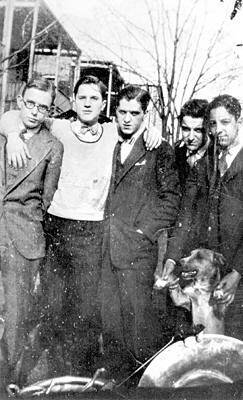It occurred to me as I was microwaving my (very) late breakfast of a bean, cheese, and jalapeño burrito, that much offense is taken these days at what is called “cultural appropriation.” Occasionally, someone on my social media feed will post an indignant diatribe about members of one (somewhat privileged) group thoughtlessly partaking of a cultural boon created by another (less privileged) group.
My response to such thinking (as I prepare to duck the epithets that inevitably ensue) is that for some of us, at least, there would be no culture without appropriation. I’ve never been possessed of a strong innate ethnicity that I could brandish with pride. In the seventh grade, we were required to bring in a food item relating to our specific heritage for a banquet celebrating Where We Came From.
In the dim, distant past, someone on my mother’s side had sailed in from Poland but I have never been able to tolerate Polish food unless prepared by a non-relation. I never felt that anything wrapped in cabbage and served by my mother was a celebration of my cultural roots. There was a second maternal line that came from Lancashire (though the name was Welsh) and so I ultimately (and grudgingly) produced a Welsh Rarebit. It was so gross that no one would try it. I took it home and threw most of it away, envying the Italians.
In this age of DNA analysis, I had my ethnicity checked and discovered my genes are literally representative of the whole population of Europe. If I were deported, they would have to turn me into hamburger and send a portion to each country. Though I may claim beer, and noodles, and the lively rhythms of the polka, there is no spice, and no syncopation, inherent in my genetic makeup. Craving those boons, I have had to commandeer them.
I have made peace with my tendency to lift, fuse, and meld those extraneous cultural goods. Not that I feel compelled to meditate upon Sacco and Vanzetti while eating Chef Boyardee ravioli, but I observe a certain respect for the source. I make my own pasta sauce with due care, and my wife (pan-European like myself, though she claims “Irish”) deems it the best she’s tasted. Musically, I have been inspired to dabble in Trinidadian Calypso, with perhaps more enthusiasm than skill, but with a profound admiration for the originators of the form.
In such a light, cultural appropriation might be the sincerest form of flattery of a people. In clumsier and less thoughtful hands, it may devolve into condescension, if not mockery. A century ago, there existed a whole genre of music that now can barely speak its name. It embodied caricature, stereotype, and the rude lampooning of a persecuted minority—and yet, even as an open insult to an entire race, it betrayed the oppressor’s subconscious craving for more rhythm and more spice.

At present, we should know better. We may freely obtain all the genuine syncopation and spice we desire without pretending we’re superior to it and belittling its source. Unfortunately, levels of sincerity, depth, and appreciation vary. There are those of us who appropriate the trappings of a culture as surface adornments, or as mere ironic props, without due understanding or regard for their history.
This occurs sometimes in the world of classic jazz. Traditional jazz, far from being a set of musical clichés accompanied by trite gestures and attitudes, is informed by the deep and continuing history of the music and of those who have made it. We are beguiled by its moments of seeming lightness, but we mistake that levity for frivolity at our peril. Even as it jokes with us, there is no denying its underlying heartbreak. It is never less than serious, even at its most lively.
Jazz first arose in a city beset by regular outbreaks of Yellow Fever and by other calamities, both natural and man-made. Its deep joy was a response to pain and to the impermanence of life. In enveloping that pain, it retains it at its core. We distinctly hear that pain within the joyous music of Louis Armstrong—and within the music of others who came after.
Musicians who cannot or who will not sense that within the tradition are dilettantes. Through stagecraft and other devices, they may achieve some popularity, but their work is, at best, momentarily engaging—and, at worst, a travesty. They’ve appropriated the forms without honoring the substance.
What they also miss is Louis’ own injunction: “Tell a story.” The story of jazz is real, and those who approach the music with the sincere determination to pick up the thread will succeed in carrying the narrative forward. Others may achieve nothing more than a line of boisterous and facile gibberish.
I admit that jazz is not my native language, or, by a strict view, even within my rightful bailiwick. I am an interloper. Jazz, however, is magnanimous enough to let everyone in who is willing to listen. All that jazz demands of us is that we do listen—that we pay heed to the story it has to relate. That story may not always be pretty and we may feel the urge to turn away during the most intense moments, but it is always compelling—and we ever return to it.






















